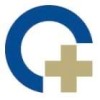
Sheffield Multiple Rib Fractures Study:
Rib FracturesAn observational study to derive clinically relevant and predictive rib fracture classification systems, based on retrospective and prospective cohorts, incorporating assessment of PROMs (Patient Reported Outcome Measures) and healthcare utilisation

Prediction and Secondary Prevention of Fractures
Osteoporotic FracturesHip Fractures5 moreThe purpose of this study is to investigate patient related factors that contribute to increased risk of recurrent fractures and to investigate patient adherence to prescribed anti-osteoporotic drugs.

Risk Taking and Fracture Study
FractureBoys suffer a disproportionately large number of fractures compared to girls (55-60%). This study aims to determine why this is the case by identifying risk factors for wrist fractures. The increase in fracture during childhood and adolescence may be associated with 1) risk-taking behaviour in boys, 2) obesity trends in boys during childhood and adolescence, and/or 3) impaired acquisition of bone strength during childhood and adolescence. Importantly from a knowledge translation perspective, modifiable factors such as behaviour, dietary habits or physical activity in boys may predict fracture. The investigators will measure 400 children (100 girls and 100 boys who have sustained a fracture; 100 same age and sex friends) across 4 years of growth. This study will assess risk behaviours, diet, physical activity, motor proficiency (i.e., balance and coordination), fat and muscle mass and bone strength to determine if there are, 1) differences in whether all or some of these factors predict fractures in boys compared with girls and, 2) whether these factors track forward similarly in boys compared with girls as children advance through the growth spurt.

Focused Registry SmartFix
Fracture of Shaft of Tibia20 patients having received an AO large external fixator at the tibia will be equipped with a data logger device (AO Fracture Monitor) attached post-operation to a connection rod of the external fixator. The device continuously measures deformation of the fixator frame due to weight bearing for up to 6 months by means of a strain gauge. Several parameters are calculated from the recorded change in the strain signal and are stored at a regular interval.

Insole Sensor to Determine Optimal Limb Loading in the Rehabilitation of Ankle Fractures
Ankle FractureThe purpose of this study is to use a novel load monitoring technology to correlate limb loading to ankle fracture outcomes. This study will collect continuous limb loading data and will provide the first objective insight into how limb loading directs fracture healing.

Epidemiology, Identification Rate and Treatment Penetration of Osteoporotic Vertebral Fractures...
Postmenopausal OsteoporosisSpinal FracturesIn Switzerland, the prevalence of vertebral fractures in community- dwelling women is unknown and the published data from the Swiss hospitals statistics represent only the tip of the iceberg. In addition, the percentages of women correctly identified with vertebral fractures due to osteoporosis and the treatment rate of these women with a drug proven to reduce the risk of further fractures are unknown. Furthermore, it is not known whether the prevalence of vertebral fractures differs between urban and rural areas or between mountain areas and plain country, e.g. due to possible differences in sun exposure (vitamin D production) and/ or in physical activity and/ or dietary habits. Clinical signs and symptoms leading to the suspicion of vertebral fracture(s) lack either sensitivity (wall-occiput distance) or specificity (rib-pelvis distance). Whether a combination of both would improve sensitivity and specificity is unknown. The gold standard for the diagnosis of vertebral fracture relies on antero-posterior and lateral X-Rays of the thoracic and lumbar spine. Despite standardization of X-Ray readings, a retrospective study of hospitalized elderly patients has shown that as many as 50% of the radiographic reports failed to note the presence of moderate to severe vertebral fractures. In a primary care setting, fewer than 2% of the women received diagnoses of osteoporosis or vertebral fracture, although expected prevalence is 20% to 30% and appropriate drug treatment was offered to only 36% of the diagnosed patients. The recent availability of software for vertebral fracture assessment (VFA) coupled to DXA measurements allows for the detection of vertebral deformities, which is critical for management of osteoporosis, as the existence of such deformities substantially increases the risk of subsequent fracture. Recently published results show that VFA allows the diagnosis of a vertebral fracture. The sensitivity of VFA for detection of vertebral fractures compared to expert radiologist reading of X-ray is excellent for grade 2 and 3 fractures, ranging between 90-94%.

Locking Compression Plate Fixation Versus Revision- Prosthesis of Vancouver-B2, B3 and C Periprosthetic...
Periprosthetic FracturesThe purpose of this study was to compare the clinical (range of motion, weight bearing, quality of life) and radiographic outcome (boney consolidation) between open reduction and internal fixation using locking compression plates with revision prosthesis using a non-cemented long femoral stem in a group of patients with a Vancouver type-B2, B3 and C periprosthetic fracture after primary total hip replacement.

Evaluation of Health and Social Interventions Aimed to Old People Discharged From Hospital After...
ElderlyWrist Fracture1 moreObjectives: To describe social and health care provided to our older patients who have been admitted in the emergency department (ED) after suffering from a hip or wrist fracture due to a fall. To compare among the different hospitals and town halls, the health and social care that participants received. To compare the functional dependency and health related quality of life (HRQoL) presented by the patients immediately and six months after a fall. Methodology: Prospective Cohort study. One hundred and fifty patients suffering from each type of fracture (hip or wrist) will be recruited consecutively in the Basque Health System's participant hospitals sub-project. Within 3 sub-projects, more than 3000 cases are expected to be collected. Data will be collected from ED and hospital clinical records and by means of questionnaires to measure functional dependency (Barthel and Lawton indexes) and HRQoL (SF-36) requesting information on status before the fall, immediately and six months later. In addition to this, data referred to care provided to the patients by traumatologist, rehabilitation or primary care provider as well as social services in their homes after the index episode will be collected.

Young Goalkeeper's Fracture: Radiographic Findings
Radius FracturesThe aim of this project is to evaluate retrospectively goalkeeper's fractures in children using the children fracture classification and to evaluate the distal radius tilt angle of the growth plate on plain radiographs of the forearm. Patients positive for goalkeeper's fracture will prospectively answer a questionnaire concerning risk factors and circumstances during the injury.

Pathogenesis of Atypical Femur Fractures on Long Term Bisphosphonate Therapy
OsteoporosisAtypical Femoral Fractures1 moreThe purpose of this protocol is to determine the risk of atypical femoral shaft (thigh bone) fractures after long term fracture prevention therapy with a class of drugs called "bisphosphonates", colloquially referred to as Alendronate, risedronate, Ibandronate, and Zoledronate. In addition, the study is designed to find out which patient is most likely to develop this potential life changing complication and why. Finally, the results of this study will help clinicians to better understand the reason and thus tailor patient specific treatments…i.e., "the right treatment for the right patient for right duration."
